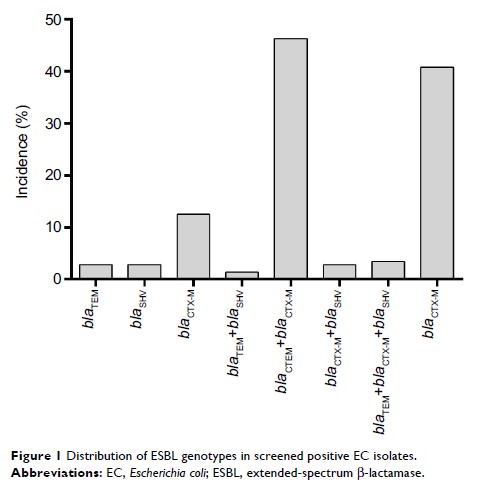108384
论文已发表
注册即可获取德孚的最新动态
IF 收录期刊
- 3.4 Breast Cancer (Dove Med Press)
- 3.2 Clin Epidemiol
- 2.6 Cancer Manag Res
- 2.9 Infect Drug Resist
- 3.7 Clin Interv Aging
- 5.1 Drug Des Dev Ther
- 3.1 Int J Chronic Obstr
- 6.6 Int J Nanomed
- 2.6 Int J Women's Health
- 2.9 Neuropsych Dis Treat
- 2.8 OncoTargets Ther
- 2.0 Patient Prefer Adher
- 2.2 Ther Clin Risk Manag
- 2.5 J Pain Res
- 3.0 Diabet Metab Synd Ob
- 3.2 Psychol Res Behav Ma
- 3.4 Nat Sci Sleep
- 1.8 Pharmgenomics Pers Med
- 2.0 Risk Manag Healthc Policy
- 4.1 J Inflamm Res
- 2.0 Int J Gen Med
- 3.4 J Hepatocell Carcinoma
- 3.0 J Asthma Allergy
- 2.2 Clin Cosmet Investig Dermatol
- 2.4 J Multidiscip Healthc

有/没有生物膜形成的癌症患者中大肠杆菌血流感染的临床疗效:一个单中心回顾性研究
Authors Zhang Q, Gao HY, Li D, Li Z, Qi SS, Zheng S, Bai CS, Zhang SH
Received 25 October 2018
Accepted for publication 3 January 2019
Published 11 February 2019 Volume 2019:12 Pages 359—371
DOI https://doi.org/10.2147/IDR.S192072
Checked for plagiarism Yes
Review by Single-blind
Peer reviewers approved by Dr Colin Mak
Peer reviewer comments 2
Editor who approved publication: Dr Joachim Wink
Background: Extended-spectrum
β-lactamase-producing Escherichia coli (ESBL-EC) is one of the main
antimicrobial-resistant pathogens. Little data are available on how biofilm
formation (BF) contributes to EC-caused bloodstream infection (BSI) in cancer
patients. This study investigated the impact of BF on clinical outcomes of
cancer patients with EC-caused BSI.
Methods: Clinical
outcome and microbiological characteristics including the presence of bla genes in
ESBL-EC isolates were retrospectively collected from BSI cancer patients.
Patients infected with ESBL-EC were compared with patients infected with
third-generation cephalosporin-susceptible strains. Survival curves were
generated by Kaplan–Meier analysis and the survival difference was assessed by
the log-rank test. Risk factors for ESBL-EC infection, predictors of mortality,
and outcome differences were determined by multivariate logistic regression and
Cox regression analysis, respectively.
Results: A high
prevalence of ESBL-EC with dominant bla CTX-M-15, bla CTX-M-15 plus bla TEM-52 genotype
was found in BSI cancer patients. Independent risk factors for infection with
ESBL-EC were cephalosporins, chemotherapy, and BF. Metastasis, ICU admission,
BF-positive ESBL-EC, organ failure, and the presence of septic shock were
revealed as predictors for mortality. The ESBL characteristic was associated
with the BF phenotype, and the overall mortality was significantly higher in
cancer patients with BF-positive ESBL-EC-caused BSI.
Conclusion: bla CTX-M-15 type
ESBL-EC is highly endemic among cancer patients with BSI. BF is associated with
multi-drug resistance by ESBL-EC and is also an independent risk factor of
mortality for cancer patients with BSI. Our findings suggest that the
combination of BF-positive ESBL-EC isolates with other appropriate laboratory
indicators might benefit infection control and improve clinical outcomes.
Keywords: biofilm
formation, extended-spectrum beta-lactamase, Escherichia coli ,
bloodstream infection
